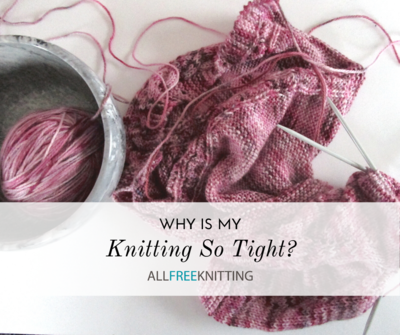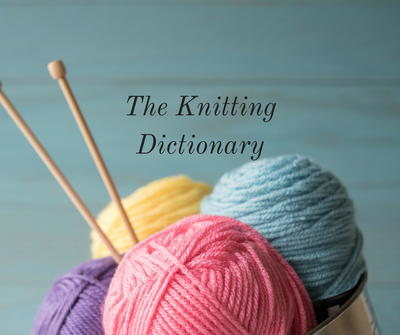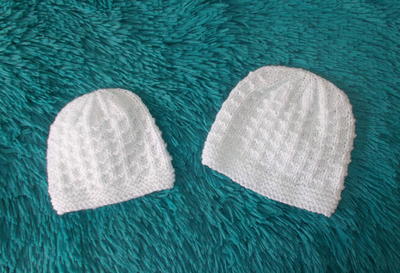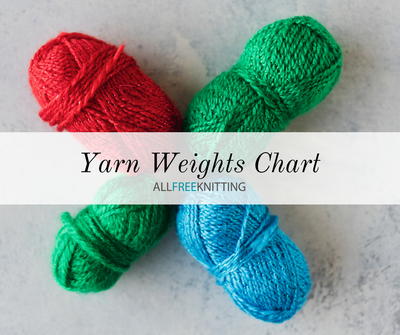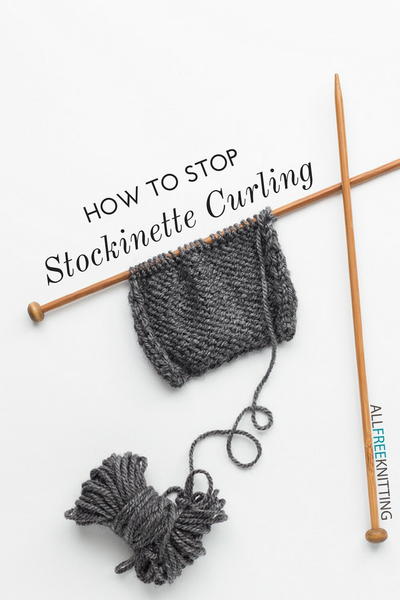Why is My Knitting So Tight?
Learn how to knit looser by identifying your problem and tackling it head-on.
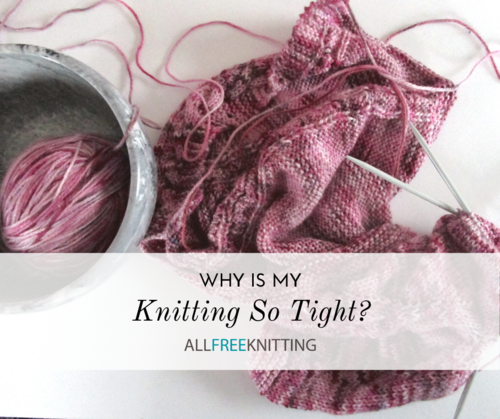
If you've come to this article wondering why your knitting is so rad, so fresh, so groovy, and so out-of-sight, that's because you're a rockstar and I'm very proud of you. On the other hand, if your knitting is so taut that you're having trouble inserting your needle into your stitches, that's more of a problem. Beginner knitters especially often find themselves with this problem and, since they're still so new to the craft, find it harder to self-correct. There are actually quite a few different reasons you may be having knitting tension problems, and they don't all come down to your own bad habits.
I should preface this by saying that it's not always a problem to be a tight knitter. Sometimes, you want a more rigid and less breathable fabric. That said, if you've come to this article, that means that it's become a problem and you're having a hard time finishing a piece the way that the pattern intends it. To figure out how to fix tight knitting, you're first going to want to grab some yarn and needles and knit yourself up a swatch. I recommend knitting a few rows of stockinette stitch and assess based on the sections of this article from there. If, alternatively, you're already midway through another project, try not to use that instead, because if you've been knitting too tightly for your entire project so far, you're not going to want your project having different tension halfway through. Let's go through some knitting troubleshooting techniques that will help you learn how to knit looser.
For more great projects like this, subscribe to our free email newsletter!
You're Wrapping Your Stitches Too Tightly
According to Occam's razor, the simplest answer is often the correct one. If, with every pattern you try and every stitch you attempt, you find yourself with rigid fabric, you're probably pulling your working yarn too tightly around your working needle as you knit your stitches. Beginners will find this easy to correct, but if you're a seasoned knitter, you may find that old habits die hard. This is, in fact, my problem—to this day, I still knit a bit more tightly than I should. I have a few different ways to learn how to knit looser if you've determined that this is the source of your tight knitting.
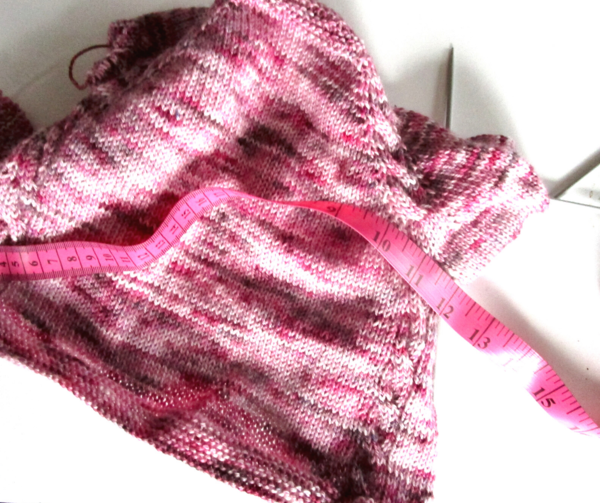
You Can...
Try a different knitting style.
This problem implies that you may be knitting English style, or by "throwing" your yarn around your needle. Try a knitting style that involves "picking" the working yarn with your working needle, instead. This way, your tension is kept even by your secondary hand holding your working yarn as your primary scoops it up for the stitch. I recommend this solution for knitters who have just started their stitching journey, since it's easier to pick up a different style of knitting when you're still new to the craft. Experienced knitters can still change, but it will be a little more challenging to get used to. Check out our tutorial on continental style knitting in the Eastern method and learn how to do it yourself.
Try dropping your working yarn.
If you're not interested in learning a different knitting style (I get it—I like throwing and I don't plan on changing!) then instead of holding the yarn as you wrap it around your working needle when you knit, try dropping it after you've wrapped it, and knit the stitch with your righthand needle without holding the yarn. Basically, let the working yarn "dangle." Don't pull at the yarn again when you pick it up for your next stitch, because that will just tighten your old one. This is meant to be a more temporary solution as you get used to working in a new tension, and I don't anticipate that you'll have to drop your working yarn for every stitch forever.
You're Knitting Off the Tapered End of Your Needle
Take a look at your needles right now. You'll notice that they're the same width all around, until you get to the tips of your needles, where they gradually get narrower until they come to a point. Knitting needles are built this way so you can easily insert your needles into stitches and slide them through without pulling on the yarn, but some knitters find themselves bunching the stitches they're working on knitting on those few centimeters at the top of their needles. Not only is it a dangerous game to play with your knitting (your stitches are always one sneeze away from falling off your needle completely!) but it drastically affects your tension because you're effectively working on much smaller needles than you thought. Learn how to fix tight knitting if you think this may be your problem with a simple solution.

You Can...
Knit off the widest part of the needle.
Simply make sure that you're inserting your working needle into your next stitch when that stitch is resting at the widest part of your needle. Additionally, push your needle deep enough in that you're not just wrapping your yarn around the tapered end of the needle. The points should always be used for needle insertion and removal, and never knit upon. Try this out for a few stitches if you think you may be knitting on your needle points and see if this fixes your problem.
You're Using the Wrong Kind of Needles
What does this mean? First, look at the pattern. Double-check the size needles that the pattern calls for against the size needles that you're using. Be sure that you're paying attention to if the unit of the needles is in millimeters; if a pattern calls for 4mm size needles, that is not the same thing as a US size 4 set of needles. Check our conversion chart if you need help with this. If your knitting needles are the right size, they may still be the problem; certain materials of knitting needles breed tighter knitting because the needles themselves are grippier.
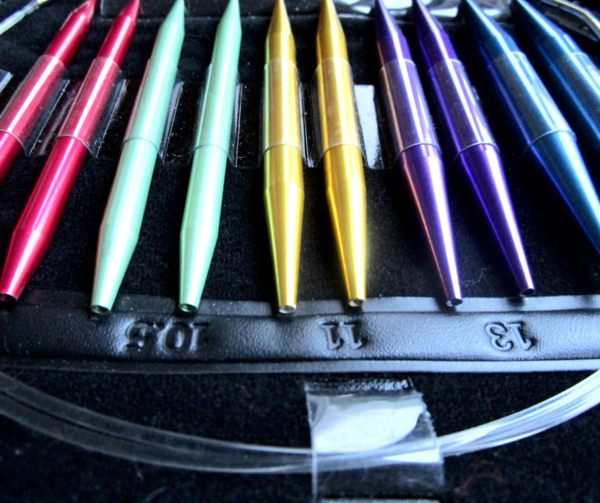
You Can...
Switch to a different needle size.
If you've identified that you were, in fact, using needles that are too small for your pattern (or even your yarn—you can find the recommended needle size for your yarn on most yarn sleeves), simply swap out to a larger set of needles. Even if you're using the correct needle size, if you're constantly knitting too tightly and changing your habits (as suggested above) didn't work for you, it may not hurt to try increasing a needle size or two and checking your gauge. You may simply need to work with differently-sized needles moving forward. For more information on checking your gauge, read our article.
Switch to a different needle material.
Many people swear by wooden, bamboo, and plastic needles both because they lessen impact (and are therefore easier on tired hands) and because they grip the stitches so you're less likely to accidentally drop them off the needles. The latter quality, however, is part of the reason you may be knitting too tightly. You may be getting used to the tighter feel of the stitches and be subconsciously adding to that with tight knitting. Trying out aluminum knitting needles might help you here.
Alternatively, maybe you already have aluminum knitting needles and you're finding that you knit extra tightly to help compensate for the slipperiness of the needles, and it may be time to swap out and try a pair of bamboo or plastic needles. Play around with a couple of swatches in different needle materials and see what comes out better.
You're Using the Wrong Kind of Yarn
Just the same way that your needle size dictates your gauge, your gauge is also dictated by the weight of your yarn. There are at least eight different kinds of yarn weights, ranging from lace to jumbo, and if your yarn is even just one weight category off of what the pattern calls for (particularly if it's heavier) you'll find your knitting to be tighter. As mentioned above, you can usually find what kind of needles your particular yarn calls for on the sleeve, so make sure your needle and yarn weight match relatively well.
There's also a chance that the fiber content of your yarn is affecting the tightness of your knitting. We all love acrylic yarn for its affordability and versatility in a ton of different projects, but unless it's cut with some sort of stretchy material like nylon, it probably doesn't have a whole lot of give to it. This makes knitting tighter because you're able to pull away less as you knit and therefore create less of a give.
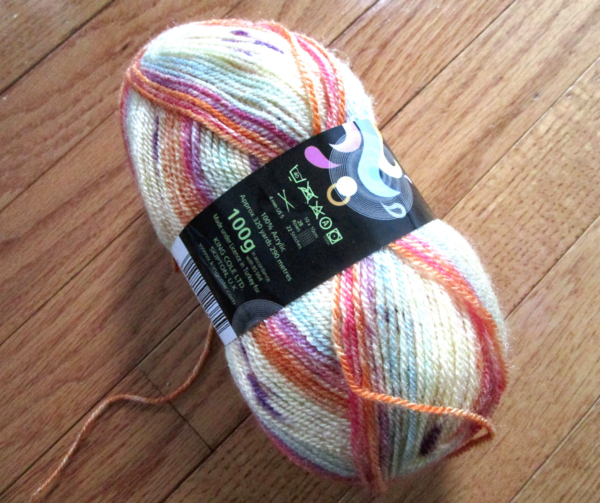
You Can...
Try a different yarn weight.
Let's say you're knitting a standard dishcloth with size 7 needles and some cotton yarn you picked up at your local yarn store forever ago. It turns out after reading the yarn label that the cotton yarn is bulky weight, and suddenly, everything makes sense. Typically, you're looking at using a worsted weight yarn for size 7 needles. Try switching to a yarn that's lighter in weight, or check out our suggestion above to swap out your needle size and see if that helps.
Try a different yarn fiber.
Working with something with nylon or an animal-based fiber like wool (which is notoriously a bit more forgiving) may fix your tension issues. Try this and see if that doesn't solve your problem. You may find that your tastes in yarn get expensive, but it's so worth the extra money for a positive knitting experience and for you to not hate every finished pattern you make.
Up Next:
Read NextYarn Weight Categories 101

